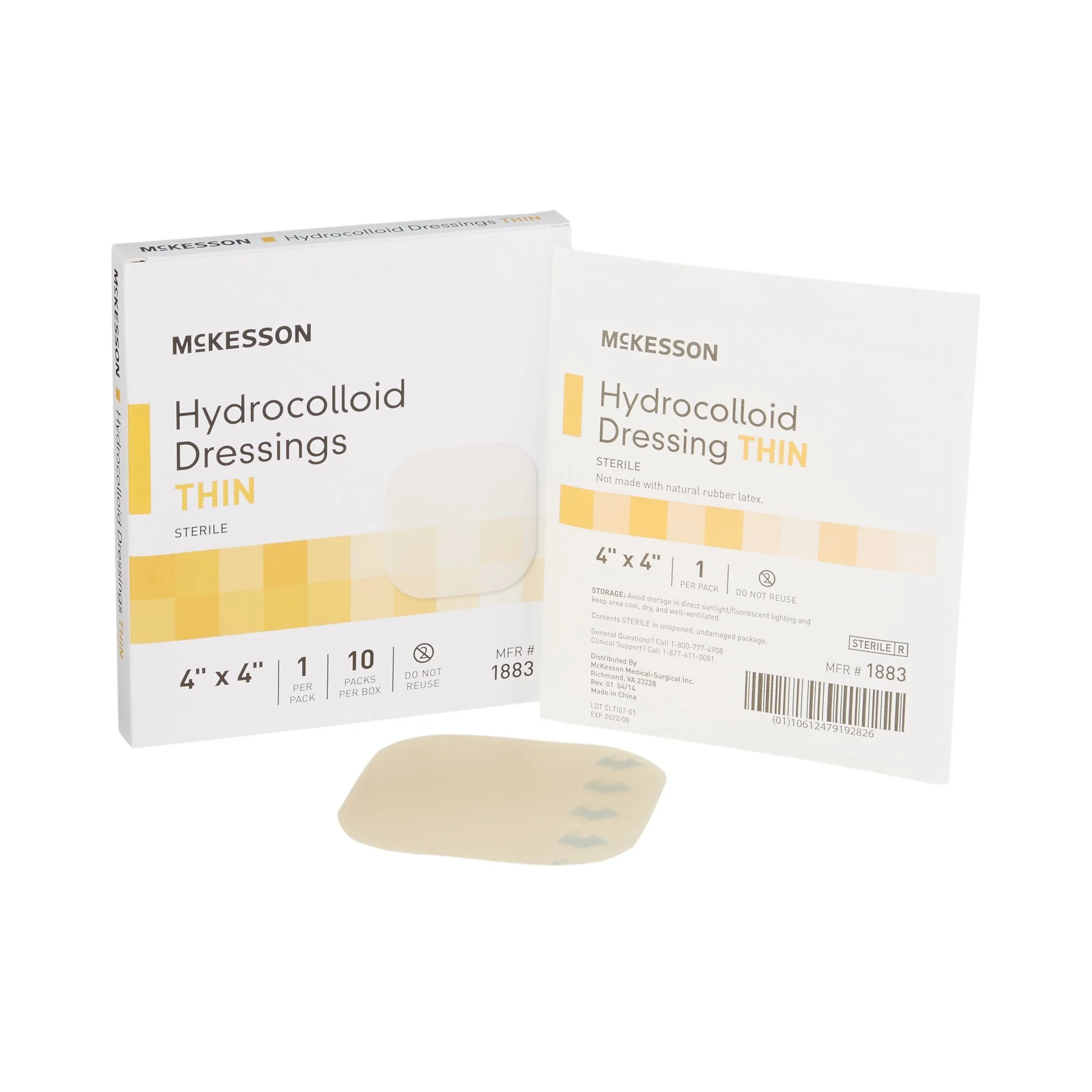Thin Hydrocolloid Dressing McKesson Film Backing 4 X 4 Inch Square Hydrocolloid / Film
Hydrocolloids: Primary or secondary dressing for wounds with light to moderate exudate. Helps maintain a moist wound environment to assist in autolytic debridement. When in contact with wound exudate, it forms a fluid/gel environment over the wound bed. Dressing does not break down or leave residue in the wound. Thin and Film Back versions feature a smooth, tapered design to help minimize friction and prevent dressing edges from rolling up. Thin hydrocolloid is semi-transparent, allowing vizualization of the wound. Contains a semi-transparent layer that permits wound evaluation without removing dressing. Moisture-resistant backing helps prevent urine, feces or moisture from penetrating the dressing to reduce risk of contamination.
Indications: Management of partial and full thickness wounds such as leg ulcers and pressure sores. Help maintain a moist wound healing environment to assist in autolytic debridement and protect the wound from external contamination.
Contraindications: Patients with known hypersensitivities to the components of the dressing or third-degree burns. Conditions that lead to the formation of the wound (pressure, venous insufficiency, etc.) must be considered and addressed as part of the total wound care treatment plan.
Change Frequency: Dressing change frequency is dependent upon the amount of drainage. May be left in place for up to seven days or as directed by a healthcare professional.
McKesson Thin Hydrocolloid Dressings aim to provide an optimal wound healing environment with a matrix design that delivers enhanced absorbency, flexibility, and overall patient care.
Not only does the new design help prevent residues from leaching into wound bed, but it keeps the wound contact layer intact, reduces the potential for skin maceration, and assists in one-piece removal.
Hydrocolloid layer reacts with cellular material from the wound to form a gel-like covering to help maintain a moist wound environment
Cohesive dressing removal system does not break down or leave residue in the wound and facilitates easy removal without tearing the dressing or skin Wound contact layer remains intact and minimizes potential wound bed disturbance
Low-profile rounded corners and smooth tapered design helps reduce edge roll-up and risk of shear and friction
Semi-transparent outer layer permits wound site visualization without removing dressing
Thin and flexible dressing conforms to body contours; adhesion is firm yet gentle to peri-wound skin, single use
Highly absorbent inner layer effectively removes exudates from the wound and facilitates granulation, epithelization, and autolysis
Moisture resistant outer barrier film helps prevent urine, feces and/or moisture from penetrating the dressing reducing the risk of contamination to the wound
Up to 7 day wear time provides undisturbed moist wound environment, enhances healing, minimizes skin maceration, and reduces frequency of dressing changes
Not Made with Natural Rubber Latex

